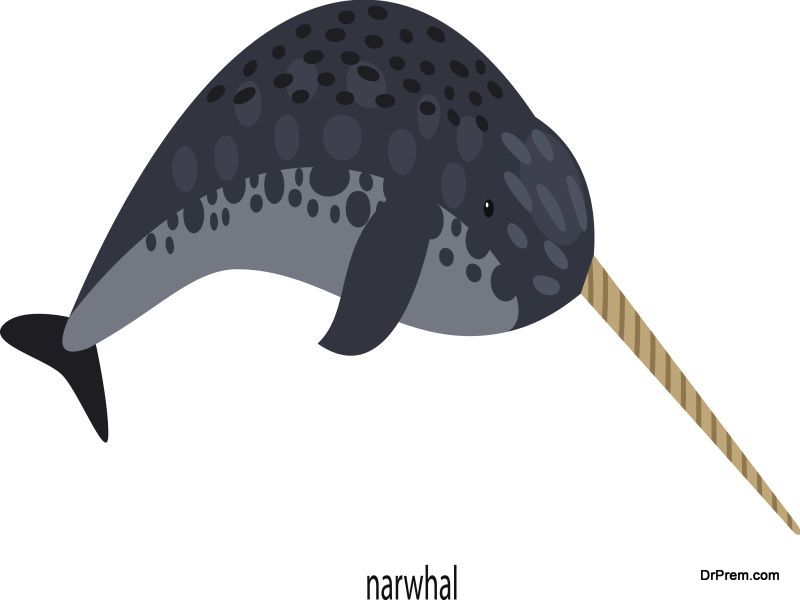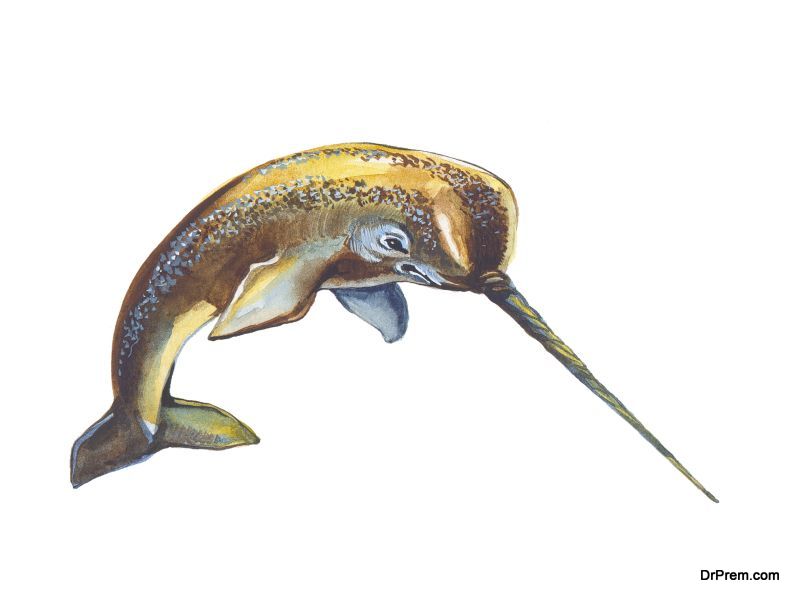The narwhal is an elusive creature of the sea which has become the stuff of legends. It is a whale which can be found in the Arctic Ocean. This whale has mystified people for hundreds of years as it reminds people of the unicorn. This is because of its tusk which can be up to ten feet in the male. This “horn” or tusk is actually the creature’s left tooth which extends out through the upper lip. The name of the narwhal is derived from a Norse word “nar”, meaning corpse, as the grey, black and white color of the adult looks like a corpse and Monodon monoceros – “one horn, one tooth”, in Greek is its scientific name. Read on to find out some cool facts about this intriguing creature:
Distribution
Narwhals can be found in the waters near Svalbard and Russia in the Arctic Ocean. Baffin Bay, Hudson Strait and Hudson Bay off Greenland’s eastern coast, are also areas in which this whale is spotted. The narwhal’s population is mostly concentrated around the waters of western Greenland, Northern Canada. They are sometimes spotted near Alaska.
Physical appearance
The size of narwhals ranges from 13-18ft, with males being slightly bigger than females. Males weigh up to 4000 pounds and females up to 2200 pounds. The color of narwhals is a mottled white and black, with older males being completely white sometimes. The mouth is curved, giving the appearance of a smile always. Instead of dorsal fins, these whales have a dorsal ridge on top of the body, which allows it to swim underneath ice. They have a flexible neck, short snout and a thick blubber layer which keeps them warm.
Unique tusk
The narwhal tusk is the canine tooth that projects from the left of the upper jaw forming a left helical spiral. It is hollow weighing around 22 pounds and can be up to 10ft long. Some males have two tusks, though it’s rare and sometimes, some females too have a tusk. Though there is very little known about the function of these tusks, it is thought that they play a role in rivalry between males, male selection as well as being sensory organs which can detect the slightest variations in water. Tusks have a rigid core and are usually flexible and soft outside, and grow throughout the whale’s life.
When males rub their tusks together, a phenomenon called “tusking”, it is hypothesized that they are communicating information about water they traveled in.
Reproduction
Females are sexually mature at 6-8 years and males at 10-13 years. The gestation period is about 14 months. A female gives birth once in three years. The lactation period is around 20 months and calves swim close to their mother, learning about survival skills.
Lifespan
They can live till 90 years, though the average lifespan is 50 years. They usually die of suffocation when the sea freezes but young adults mainly die from starvation.
Behavior
Narwhals usually swim in shallow water during summer and migrate to deep seas in the winter when they live under thick packs of ice. Narwhals move in groups of 10-100 known as pods and 5-10 pods congregate off-shore in summer, and the total number of whales congregating may reach to 1000. Narwhals use sounds to communicate, navigate and hunt for food – “knocks’, “whistles” and “clicks”.
Diet
The favorite food of narwhals is squid, halibut, shrimp, cuttlefish and cod. They feed by swimming extremely close to their prey and sucking it with great force, as they do not have dentition.
Diving
Narwhals can dive up to 1600 m or a mile for food, with dives lasting for 25 minutes. Narwhals spend a whopping 3 hours a day, which amazes researchers, as there is a huge amount of pressure on the bodies. They can do this as they have a compressible and flexible ribcage, and have a pigment called myoglobin which supplies oxygen and stores it.
Narwhals are fascinating creatures but their numbers are declining due to habitat destruction and climate change. If they can change their behavior, we can look forward to narwhals being with us for a long time to come.






